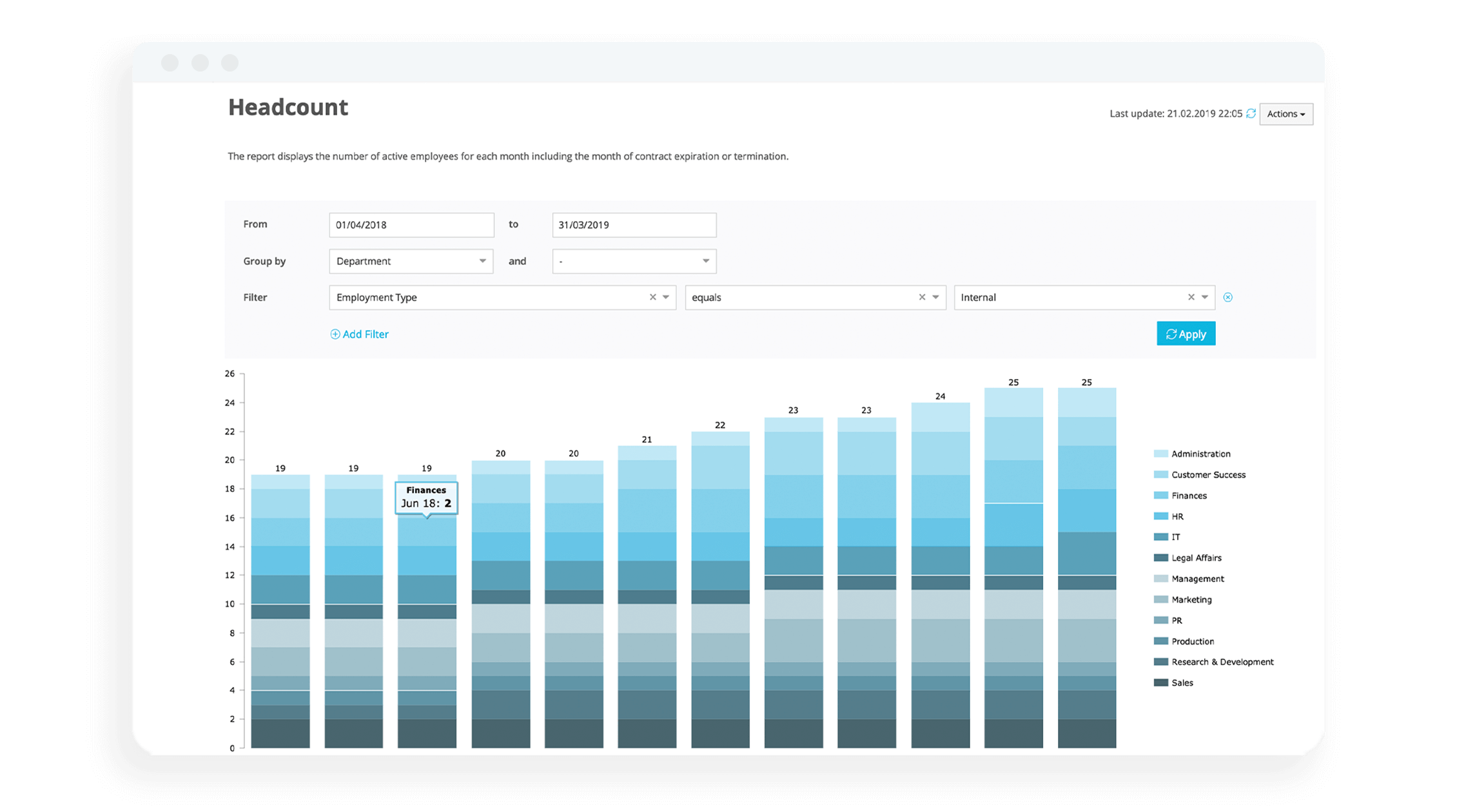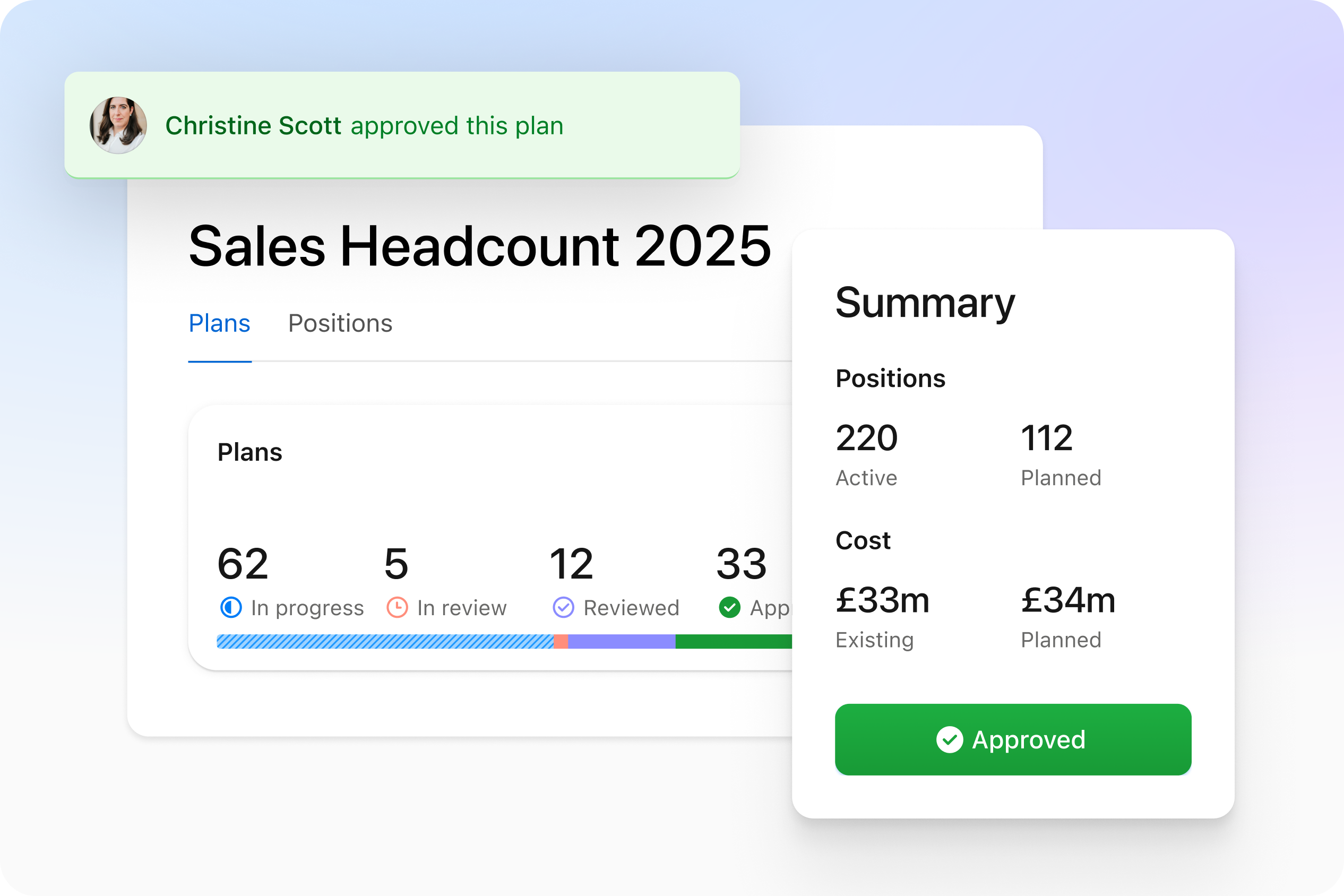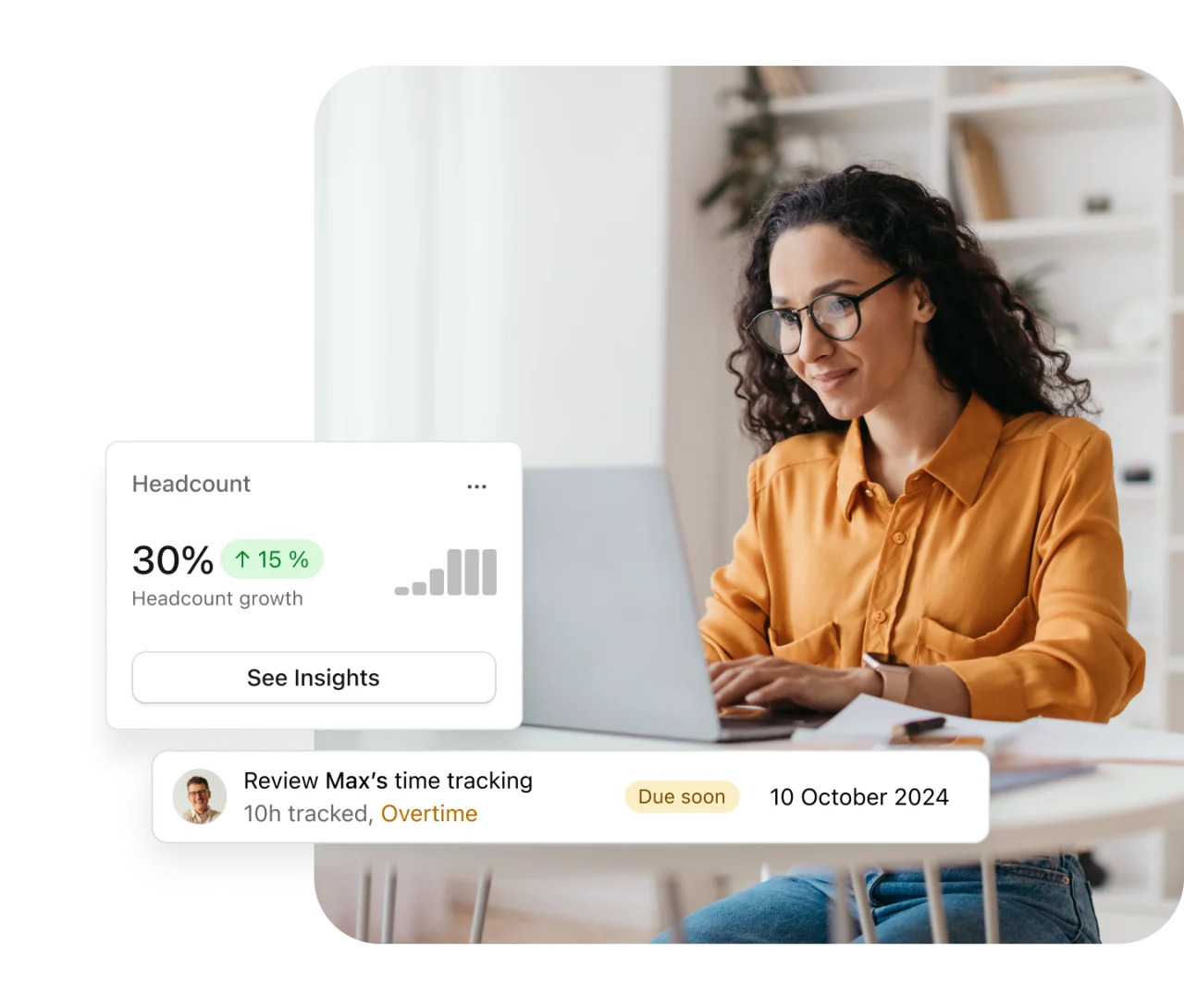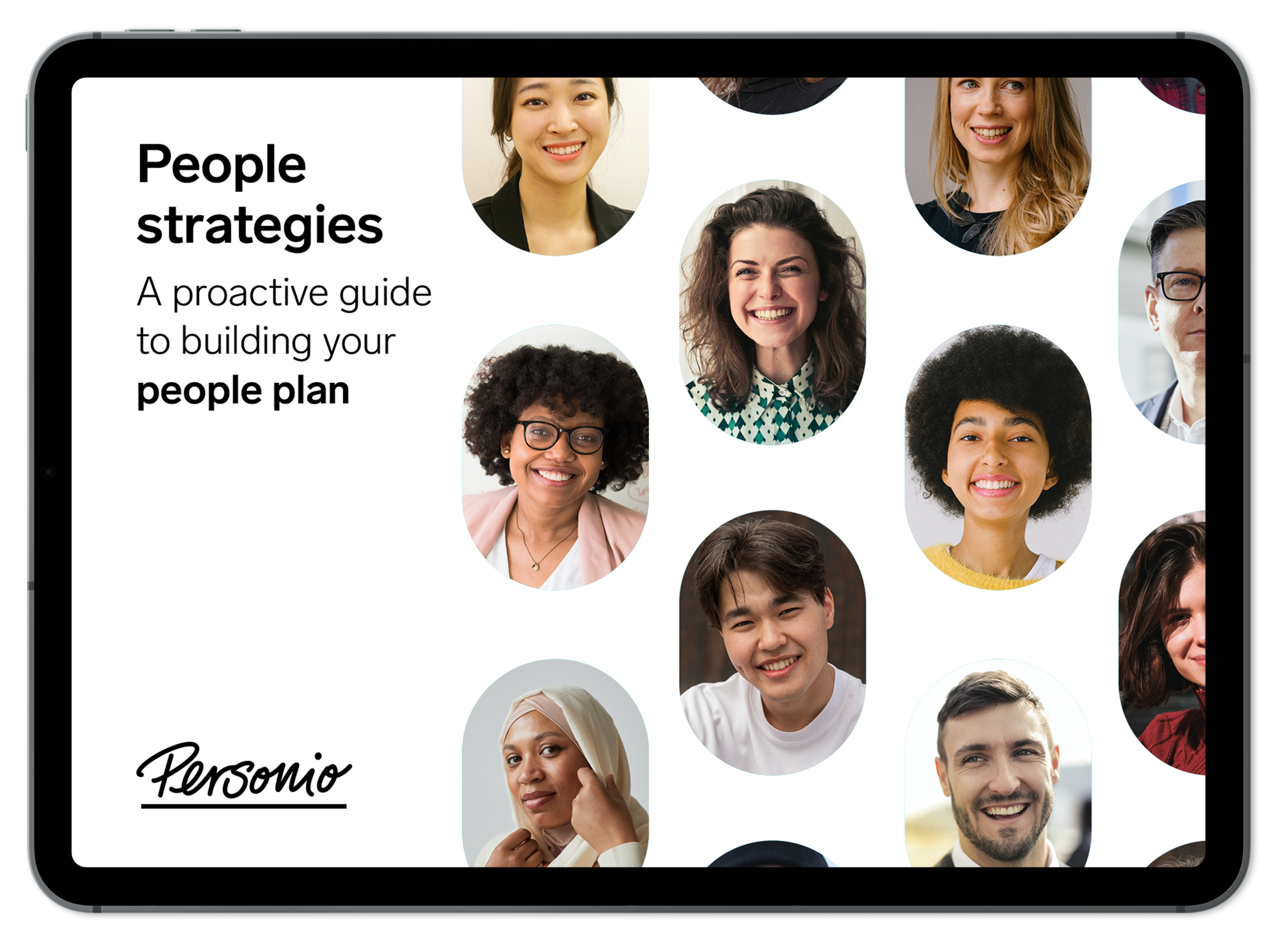The role of technology in modern workforce planning

Workforce planning is about getting the right people in place to set up your company for lasting success. Without a workforce plan, it’s impossible to stay ahead of challenges like unexpected turnover or skills shortages. You may find yourself driven by immediate crises rather than what’s best for the organisation.
However, this essential HR process can require a lot from your team. You have to balance workforce supply and demand and handle large volumes of data while staying aligned with your overall HR strategy. And once you have a plan in place, your business needs can suddenly change and force you to hit the reset button.
Spreadsheets and documents fall short of solving complex workforce management tasks, and only software lets you develop a scalable approach to workforce planning that helps you drive business success.
Let’s explore the issues specialised HR solutions solve and how they improve workforce management processes.
The challenges of manual workforce planning
“Handling workforce planning manually is time-consuming and sets you up for errors and inefficiency,” underlines Yan Courtis, CEO of Flexspring (one of Personio’s integration partners).
From disorganised data management to scalability issues, here’s what’s at stake when you rely on outdated, manual workforce planning methods.
“Without specialised tools that automate data analysis, you’re forced to plan your workforce based on anecdotal evidence or a partial view of past data. You rely too heavily on gut feelings and miss some potentially big opportunities to fill talent gaps or address surpluses before they grow into an obvious problem.”
– Albert Kim, VP of Talent at Checkr
1. Data management and accessibility
Sifting through spreadsheets and disconnected documents impedes your ability to conduct a comprehensive analysis and reach any valuable conclusions when it comes to workforce planning.
As Yan says: “This scattered data makes it nearly impossible to get a clear, real-time view of your workforce. As your company grows, this manual approach becomes even more overwhelming.”
Disjointed data means key stakeholders can’t always access and interpret it, making it impossible to reach the fast, accurate decisions that are necessary for your business to thrive.
Despite these issues, around half of organisations haven’t incorporated workforce data into their overall analytics strategy.
2. Errors and a lack of accuracy
Manual processes are highly error-prone. Even your most meticulous team members can make typos, misinterpret details or copy the wrong data.
Simple errors like these can snowball into much larger issues. For example, one missing zero could cause you to seriously underestimate your workforce needs and leave critical roles unfilled. This can ultimately hamper your team’s productivity and performance.
Some mistakes go unnoticed for weeks or even months. By the time you’ve realised, it may be too late to course correct and reverse the damage.
3. Efficiency and scalability
As your business grows, manual processes can’t keep pace. What worked for a small team quickly becomes unmanageable as you deal with an increasing number of employees, processes and systems.
But your organisation needs to remain agile, and if inefficient processes prevent you from accessing data and making fast decisions, you’ll miss out on opportunities.
Staying ahead of your workforce needs is especially critical when it comes to talent acquisition. The average time-to-hire is over 47 days, so if you have roles you need to fill ASAP, you need to know your staffing needs over a month in advance. Businesses must identify future needs and devise strategies quickly to have a chance at plugging skills gaps.
“Predicting the talent we need is a bit like trying to guess what the weather will be like next summer. New skills are always emerging. But if we don’t keep up with changes, we risk ending up with a team that’s unequipped to handle new projects.”
– Kraig Kleeman, CEO at The New Workforce
Avoid data silos and costly errors with specialised workforce planning software

Personio keeps your HR ecosystem connected and gives you accurate, up-to-date insights that help you better anticipate your workforce needs.
Learn moreHow technology can help you optimise your approach to workforce planning
“Technology really changes the game when it comes to workforce planning,” says Yan. “By integrating all your HR data, you get a clear, real-time view of your workforce. This makes decision-making faster and more accurate.”
Now half of organisations are planning to introduce tools to support their workforce planning process, signalling a broader industry shift.
Let’s explore why they’re making the move and how workforce planning tools can benefit your team.

1. Automation for fewer manual tasks
“I highly recommend using tools that prioritise data integration and automation,” says Yan. Workforce planning software automatically connects your data across different HR functions, giving you a clear picture of your people at a fraction of the effort doing so manually would.
What’s more, by automating HR tasks, you can reduce time spent on paperwork and team communication. This frees up your time to focus on analysing business needs, setting strategic goals and developing workforce plans.
The right software lets you automate:
Job postings
Applicant tracking
Candidate management
Onboarding and offboarding
Time and absence tracking
Performance management
Compensation management
Succession planning
Look for solutions with customisable automation tools, like Personio, that allow you to shape the tool to your workflows rather than the other way around.
You decide the triggers for each action and set up rules and conditions. If you need to maintain some oversight, you can receive notifications to review and approve everything. And instead of managing every handoff, HR managers can also use the system to delegate. It’s simple to assign tasks to users and share all the information required.
The result is a more efficient HR team that doesn’t have to sacrifice accuracy – meaning you can move forward with large-scale hiring or restructuring plans with confidence.
2. Data analytics for quicker access to insights
Technology helps you make sense of large sets of workforce data in seconds. You can instantly spot trends and adapt your organisational strategy, making it easier for your company to seize opportunities or mitigate risks before it’s too late.
For instance, Personio integration partner Beekeeper relies on data analytics to understand their workforce demand.
“We track metrics like employee performance, project timelines and industry trends,” says Louise Willoughby-Petit, the company’s VP of People, “Monitoring our productivity in real-time helps us anticipate when and where we might need to hire more staff.”
Data analytics tools perform four main functions:
Sourcing current workforce data
Cleaning and organising this data so it’s easy to view
Using algorithms to uncover trends and patterns
Turning all the data into insights
In fast-moving organisations, teams don’t have time to pour over reports. HR teams have to present this information in a simple and accessible format.
That’s why it’s best to use analytics tools with customisable reports like Personio. You can use filters to choose the most relevant metrics and visualise data in the format that suits your needs.
By making workforce planning insights easily accessible, your team can collaborate better and make data-driven decisions that help ensure your business is prepared for a variety of future scenarios.
3. AI for improved forecasting and resource allocation
AI tools can help you anticipate future workforce needs with a greater degree of accuracy. 67% of HR teams have already integrated the technology into their system in some way to make decisions with more confidence and clarity.
Traditional workforce planning methods rely on historical data and intuition to predict future demand. One popular example is time trackers; many companies use these to analyse old timesheets and shift patterns to see when they’re busiest.
These methods can be helpful, but they’re unreliable and imprecise. They can’t account for all the various factors that impact workforce planning, like regulatory changes and economic downturns.
Meanwhile, AI can process a vast quantity of workforce and industry data and analyse it to identify trends, patterns and correlations that people might easily miss.
HR teams can use this technology for scenario planning so you can see all possible outcomes and the best courses of action for each. This helps prepare you for every eventuality, should the economy and labour market become unpredictable.
Suppose there are rumours of a disruptive, new technology entering the market. AI could suggest strategies for workforce optimisation, tell you what skills you’ll need in new hires and advise which departments to train.
“Technology can help us pull data from across different data sources for a full-picture view of your data. From there, you can use AI-driven analytics to build predictive models and more realistic forecasts of future trends. With fewer surprises, it’s easy to plan accordingly.”
– Albert Kim, VP of Talent at Checkr
4. Integrations for more unified systems
You need to consolidate your systems for workforce planning to be truly effective.When your teams work in silos, you’re left piecing together information, making it easier to misinterpret data or overlook important details. Even if there are no errors, you may struggle to get a comprehensive view of your workforce and develop a cohesive plan for your workforce.
Connecting all your software allows data to flow freely between all your departments, and you can access all the information you need to make informed workforce planning decisions in one place.Technology makes this possible by integrating all your essential HR, operational and finance software and automatically sharing data across the platforms.
Studies point to integrations as a key factor in business success. Some 95% of top performing companies say they have a well integrated tech stack, and they’re eight times more likely to have a consolidated system than underachievers.
Look for software with an extensive integration marketplace like Personio that lets you connect essential HR operations, including:
Recruitment
HR and operations
Finance, accounting and payroll
Talent development
Workforce management
Leverage Personio’s specialised workforce planning software

Workforce planning comes with plenty of hurdles, from managing data to building scalable processes. Only specialised technology like Personio can help you move past them
Personio’s dedicated workforce planning tool lets you instantly access the information you need to evaluate your headcount and identify which positions you need to fill to adapt to your organisation’s evolving needs. Need input from other managers and departments? Everyone can easily access and collaborate on workflows in the tool.
Once your strategy is in motion, you can track your progress on Personio to see how close you’ve come to your targets and check the status of teams and individual personnel. As you hit road bumps, you can quickly adjust your processes and parameters.
The platform also tracks real-time people data, like personnel costs and vacancies, to help you understand the cost of unplanned changes.
Best of all: Personio’s all-in-one software keeps your workforce planning processes connected to other related HR operations like recruitment, absence management and payroll. Improve your workforce planning process with Personio to ensure you’ve always got the right talent to meet any challenges that come your way.
Ditch the spreadsheets for an integrated and uncomplicated solution to workforce management

Personio makes workforce planning more agile and accurate, helping you plan for the unexpected and set your business up for success.
Learn more
